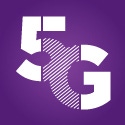
Chinese equipment maker ZTE claims to have tripled the overload capacity on wireless networks through the use of its pre-5G Multi-User Shared Access (MUSA) technology.
Describing the development as a "breakthrough in 5G research," the company said the MUSA algorithm had delivered a 200% improvement in overload radio capacity, arguing this would help to prepare networks for the transition to the Internet of Things.
Like other companies targeting the 5G opportunity, ZTE Corp. (Shenzhen: 000063; Hong Kong: 0763) believes future networks will need to support a vast array of connected devices and not just the smartphones and tablets they currently handle.
ZTE also flagged successful tests of another pre-5G technology it calls Ultra Dense Network (UDN), which is intended to help operators deploy basestations in denser configurations so they can boost network capacity.
MUSA and UDN are two of several pre-5G technologies that ZTE expects to see in commercial deployment this year. The vendor says its goal is to provide a "5G-like access experience" to users of 4G LTE technology. (See You Can't Spell 5G Without LTE.)
"The pre-5G solution will help operators exponentially enhance the access rate and overall network capacity by leveraging existing resources in the next three to five years," said Xiang Jiying, ZTE's chief scientist, in a company statement. "Before standardization of 5G technologies, this solution can effectively mitigate the challenges of data traffic surge, and help operators seize market opportunities and achieve better business development."
ZTE has also been collaborating with China Mobile Ltd. (NYSE: CHL) -- China's biggest mobile operator -- on a pre-commercial version of Massive MIMO, which is one of a number of technologies that come under the 5G umbrella.
Advanced MIMO technologies work by introducing more antennas into receivers and transmitters to increase capacity for customers, and especially users at the very edge of a cell site.
Want to know more about 5G? Check out our 5G content channel here on Light Reading.
Standardized 5G technologies are not expected to appear until 2020 at the very earliest and ZTE is evidently keen to show it is a contender in the 5G race by drumming up interest in its range of pre-5G offerings. (See 5G: What Is It & Why Does It Matter? and 5G: Generation Gap.)
The vendor may be hoping to try out some of those pre-5G offerings through its involvement in 5G:haus, an innovation lab recently set up by Germany's Deutsche Telekom AG (NYSE: DT). Using its facilities across Europe, the operator wants to gain customer feedback on technologies it is developing with 5G:haus partners. (See Deutsche Telekom Opens 5G:haus.)
Even so, there is bound to be concern about ZTE's 5G prospects following Nokia Corp. (NYSE: NOK)'s $16.6 billion bid for Alcatel-Lucent (NYSE: ALU) earlier this week. (See Nokia Makes €15.6B Bid for Alcatel-Lucent.)
A mega-merger in early 2016 would leave the telecom industry with three equipment-making giants investing in 5G -- the enlarged Nokia as well as Sweden's Ericsson AB (Nasdaq: ERIC) and ZTE's domestic rival Huawei Technologies Co. Ltd. .
Generating revenues of $13 billion in 2014, ZTE would be just half the size of either Nokia or Ericsson in sales terms, and less than one third as big as Huawei, which made $46.5 billion in revenues last year. (See Ericsson Feels US Capex Squeeze in Q4, Nokia Ends 2014 on a High and Huawei Profits Soar on 4G, Smartphone Sales.)
Despite its research efforts, ZTE may lack the wherewithal to keep pace with those players. Last year, it spent about 10% of its revenues on R&D, while Huawei invested $6.6 billion in this area and Ericsson spent $4.1 billion.
A combination of Nokia and Alcatel-Lucent would have a research budget of about $5 billion.
— Iain Morris, 

 , News Editor, Light Reading
, News Editor, Light Reading
Read more about:
AsiaAbout the Author(s)
You May Also Like










